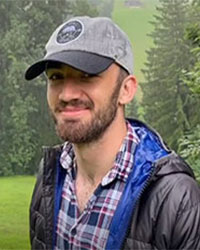Tom Moore
Biography
I’m a PhD student working within the Wolfson Atmospheric Chemistry Laboratories (WACL). I previously studied for my undergraduate degree in Chemistry at York, completing a Masters research project within WACL, working on developing the instrumentation and making early measurements of volatile organic compounds (VOCs) and oxygenated volatile organic compounds (OVOCs) at the London Honor Oak Park supersite.
Since completing my Masters, I spent two years working within industry, both in analytical laboratories and also within a role surrounding green chemistry legislation, particularly the introduction of UK REACH. Outside of Chemistry I spend the majority of my free time training Brazilian jiu-jitsu and teaching mixed martial arts to kids and teenagers.
Qualifications
Masters in Chemistry.
Research interests
Atmospheric chemistry and air quality. I am particularly interested in methane emissions, especially finding ways to locate and quantify fugitive emissions related to natural gas leaks.
Project title
Assessment of UK methane sources using mobile measurements.
Supervisors
- Professor James Lee
- Dr James Hopkins
- Dr Will Drysdale
Funding
NERC Panorama Doctoral Training Partnership.
Project outline
Methane is an important greenhouse gas, although it has a lifetime shorter than that of carbon dioxide, it has over 80 times the warming power over the first 20 years after it reaches the atmosphere. Because of the impact reducing methane emissions would have on global warming, the Global Methane Pledge was introduced at COP 26 where countries representing 45 per cent of global methane emissions have pledged to reduce their emissions by 30 per cent by 2030.
Methane emissions arise from multiple sectors; natural (such as emissions from wetlands), agriculture (such as from enteric fermentation in ruminant livestock), waste (due to the presence of methanogenic bacteria in landfills) and energy (from natural gas being used as a source of energy). The challenge with reducing emissions from these sectors is that it is difficult to often locate and quantify emissions. This project is currently focused around two areas of emissions from the energy sector.
The first section is centred around developing a new method to locate and quantify domestic gas leaks in York and Bradford. This is being undertaken via use of on road monitoring with the WACL Air Sampling Platform (WASP). The second section is looking higher up the energy distribution line, working with FAAM’s research aircraft to monitor and quantify emissions from oil rigs in the North Sea.

